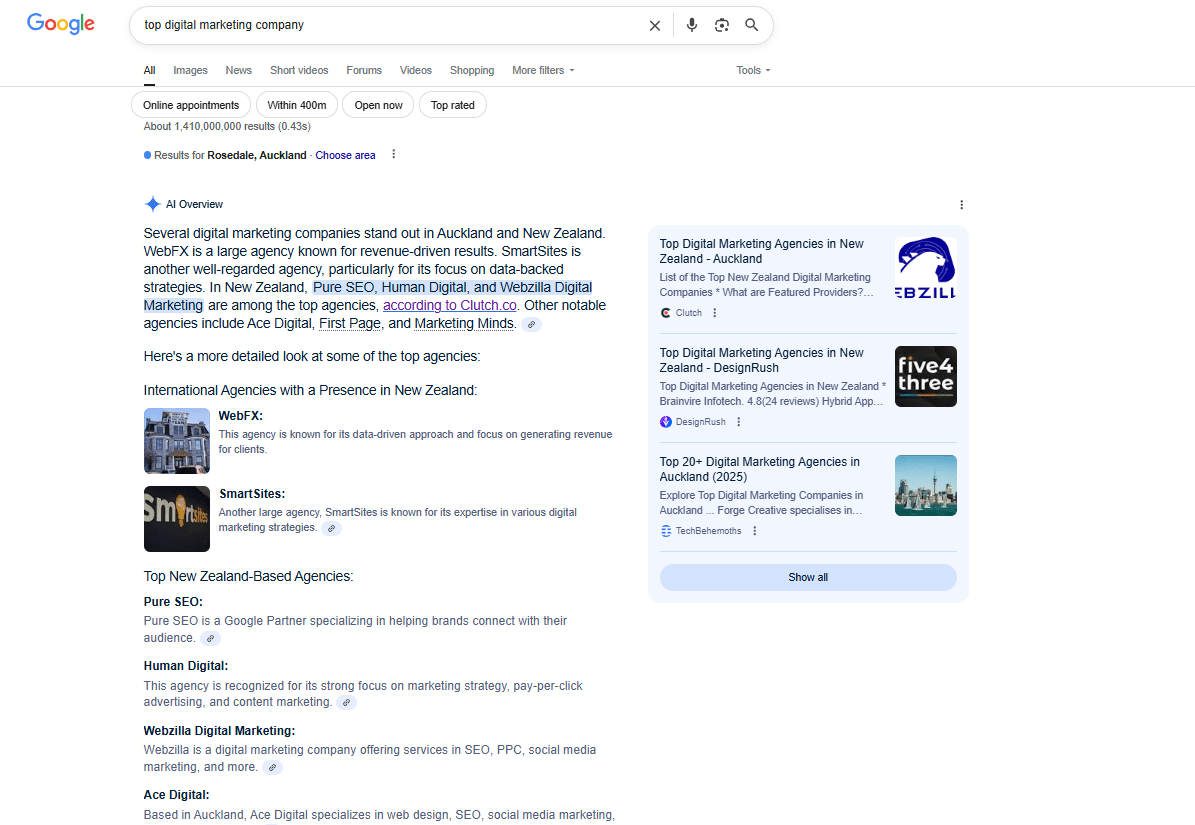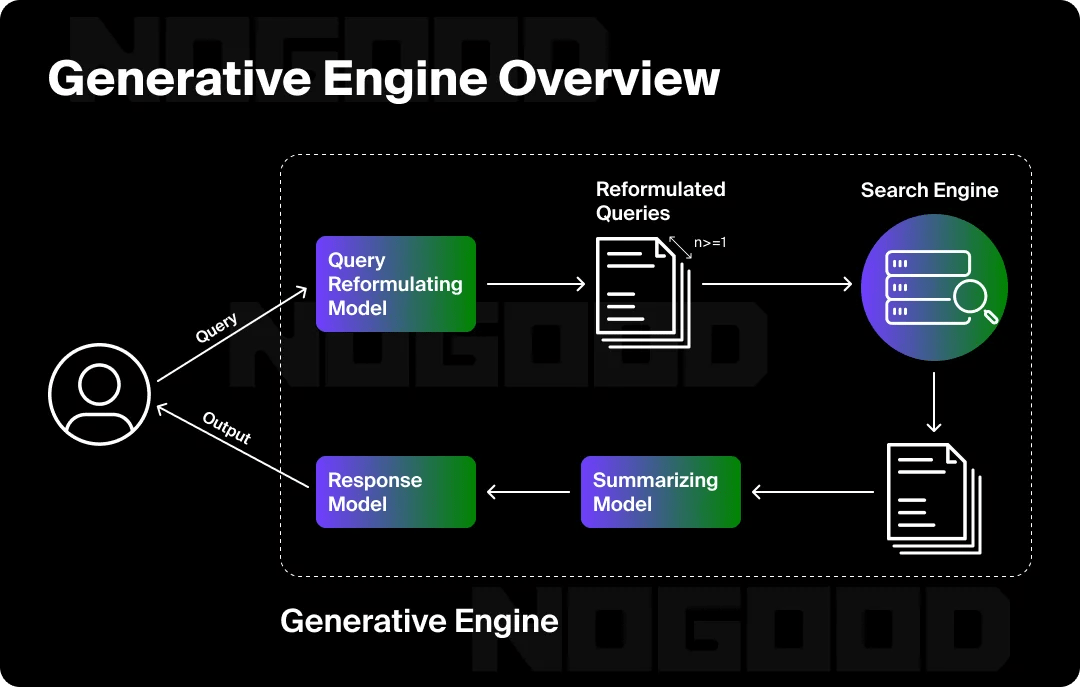
What is GEO in the Age of AI?
What is GEO in the Age of AI?
If you’re trying to make sense of the latest disruption in digital marketing, here’s a name you’re going to keep hearing: generative engine optimization, or GEO. The pace of change in how people discover and interact with content online is staggering, thanks to artificial intelligence. The profound rise of answer engines like ChatGPT, Gemini, and Perplexity has given birth to new challenges—and remarkable opportunities—for marketers and brands alike.
No longer is it enough to fight for position on a familiar list of ten blue links. Today, businesses must learn to feature where AI-powered assistants gather, distil,l and present information in seconds. Staying ahead means learning the ground rules for GEO, understanding how it intersects with classic SEO, and crafting an approach fit for this new frontier.
What Does GEO Really Mean?
At its heart, GEO is all about making sure your content can be found, understood and prioritised by generative AI and answer engines. Imagine a customer turning to ChatGPT for advice on the best running shoes, or to Perplexity for a quick legal explainer. The algorithms behind these platforms synthesise data from across the internet, assembling context-rich, conversational responses tailored to the user.
GEO is the art and science of getting your message included—and surfaced—within those AI-generated results. It’s about equipping your digital presence so your brand isn’t just lurking in the endless backwaters of the web, but right there in the spotlight whenever generative platforms provide solutions.
Example of Google AI overview

Why the Buzz Around GEO?
AI search platforms are fundamentally changing user behaviour. Instead of typing a query into Google and sifting through dozens of links, people now ask direct questions, expecting contextually correct answers and recommendations within seconds. This behaviour shift is massive.
Consider this:
- Google is seeing direct competition from AI-centric interfaces.
- ChatGPT’s user base tops 180 million monthly users.
- Gartner predicts a 25% drop in traditional search volume by 2026, and over half of current organic search traffic could be lost to these new engines.
These numbers signal urgency for anyone relying on search visibility. GEO provides a path forward, giving brands an edge as traditional SEO’s dominance wanes.
How GEO Differs from Classic SEO
Although there’s some DNA shared between GEO and SEO, the differences are significant enough to warrant new thinking. Traditional SEO is about climbing the search rankings for familiar engines—usually via keyword optimisation, technical tuning, and backlink strategies. The aim was always to convince algorithms that your content deserved to be high on the list of clickable results.
GEO, however, is designed for generative engines. Here, the goal is to become part of the AI’s answer set, perhaps as a referenced source, a highlighted authority, or the origin of a recommended product.
Let’s break it down:
| Aspect | SEO | GEO |
|---|---|---|
| Platforms | Google, Bing, DuckDuckGo | ChatGPT, Perplexity, Gemini, Google AI Overviews, Copilot |
| Outputs | Set of ranked web links | Contextual, summarised answers; references, citations |
| Content Structure | Keyword-optimised meta tags, headers | Rich contextual data, conversational language, entity-focused, structured to aid data extraction |
| User Queries | Targeted keywords and phrases | Semantic queries, natural language, intent-driven questions |
| Metrics Tracked | Rankings, organic traffic, CTR | AI engine referrals, citations, inclusion rates in responses, prominence in summaries |
| Ongoing Tactics | Backlinks, mobile optimisation, site speed, schema markup | Source credibility, answer structure, citation frequency, entity alignment, conversational clarity |
Both approaches benefit from certain common factors—content quality, technical accessibility, and relevance. Yet, GEO prioritises formatting and concepts that help AI engines parse, contextualise, and reuse your information.

Strategies for Combining GEO and SEO
No marketer should think of GEO in isolation from SEO. They’re strongest when integrated. SEO gives you foundational findability; GEO builds you into tomorrow’s conversations.
Here are actionable ways to meld the two:
- Develop a unified content strategy: Write in a style that communicates with both human readers and machines. Clear, concise, well-structured information wins twice.
- Expand your keyword research: Don’t just chase obvious phrases. Target long-tail queries, conversational patterns, and semantic clusters.
- Embrace technical best practices: Mobile-first, fast loading, structured data, and schema all remain essential. A technically solid website helps both Google and AI bots consume your content.
- Prioritise context and entities: Make sure your core topics, products or services are clearly defined and referenced in a way algorithms and large language models can understand.
- Test and iterate: Monitor traditional SEO metrics and how often your content is cited or summarised by AI platforms.
Staying agile—with tools and processes that track changes in both indexing and answer engines—will let you respond as the landscape shifts.
What GEO Brings to the Table
Let’s round up the tangible advantages:
- Wider reach: Standing out in generative answer engines brings exposure from rapidly growing user bases not touched by traditional search alone.
- Elevated user experience: By providing content tailored for AI extraction, you’re helping users receive exactly the answers they’re seeking—faster and more accurately.
- Forward-pointing brand authority: Contributing trusted, well-cited answers to AI engines can boost your standing as an authoritative voice, not just another search result.
- Richer data insights: Monitoring how your information is used and cited by AI reveal a whole new window into customer intent and engagement.
- Flexibility for the future: With search habits shifting, GEO arms your brand to stay visible and relevant as new discovery channels grow.
What Actually Works: Effective GEO Tactics
Early research provides real-world clues—and the findings are encouraging. For example, collaborative work by Princeton, Georgia Tech and others identified practical tweaks you can make today to boost your chances of being included in generative responses.
Key tactics showing positive impact:
- Citing credible sources increases trust, making it more likely your content is referenced.
- Quotes and statistics add authority and interest, enriching AI responses.
- Plain language helps AI engines parse your information accurately.
- Unique and technical terms ensure relevance for specialist queries.
- Fluency and clarity improve processing; error-free prose is crucial when machines summarise your words.
Importantly, each topic area responds differently to these tactics. Legal content, for example, benefits most from factual citations, whereas science and technology sees strong gains through technical vocabulary and authoritative language.
How Generative AI Answer Engines Work
Understanding the mechanics of how these platforms build answers is a must for any GEO effort. Here’s a simplified breakdown of the process:
- Data sourcing and processing: The AI scans swathes of articles, documents, and data.
- Contextual analysis: It identifies patterns and recognises what information is most trustworthy and relevant to the query.
- Synthesis and answer construction: The selected points are blended into a well-structured, conversational response.
- Source prioritisation: Preference is given to content that’s accurate, well-cited, and contextually appropriate.
Content optimised for these behaviours—particularly clarity, credibility, and helpful context—will find itself promoted more often in generative answers.

Image and Data Source: NoGood
GEO in Action: Practical Steps to Optimise Your Content
Brands ready to optimise for GEO should focus on the following areas:
Research and Benchmarking
- Investigate which AI-generated overviews cite your competitors
- Conduct deep analysis on types of questions where your brand should appear
- Track how often your content is referenced by ChatGPT, Perplexity, and others
Content Development
- Craft articles around user intent, not just keywords.
- Add citations for major claims.
- Use language and structure that “matches” conversational answers (think FAQs, how-to guides, succinct summaries).
- Incorporate lists, tables and bullet points to aid AI comprehension.
Technical and Semantic Optimisation
- Use schema and structured data to make relationships clear.
- Apply entity tagging to align with topic clusters and help algorithms understand your focus.
- Ensure readability and accessibility for both humans and machines.
Ongoing Refinement
- Track emerging platforms’ behaviour and response structures.
- Adjust your strategies as the major AI players update their methodologies.
Future Potential of GEO
The shakeup AI brings to digital discovery isn’t just a trend. The growth of generative answer engines is only set to accelerate, putting more pressure—and more opportunity—on companies to rethink their approach to online content. GEO stands at the intersection of content, search, and machine intelligence, opening new frontiers for forward-thinking brands willing to adapt.
As technology continues to mature and more users turn to direct questions over old-school searches, GEO will increasingly define who’s found and who’s forgotten. Being quick to understand and implement generative engine strategies is fast becoming the price of playing in digital marketing’s next era.

